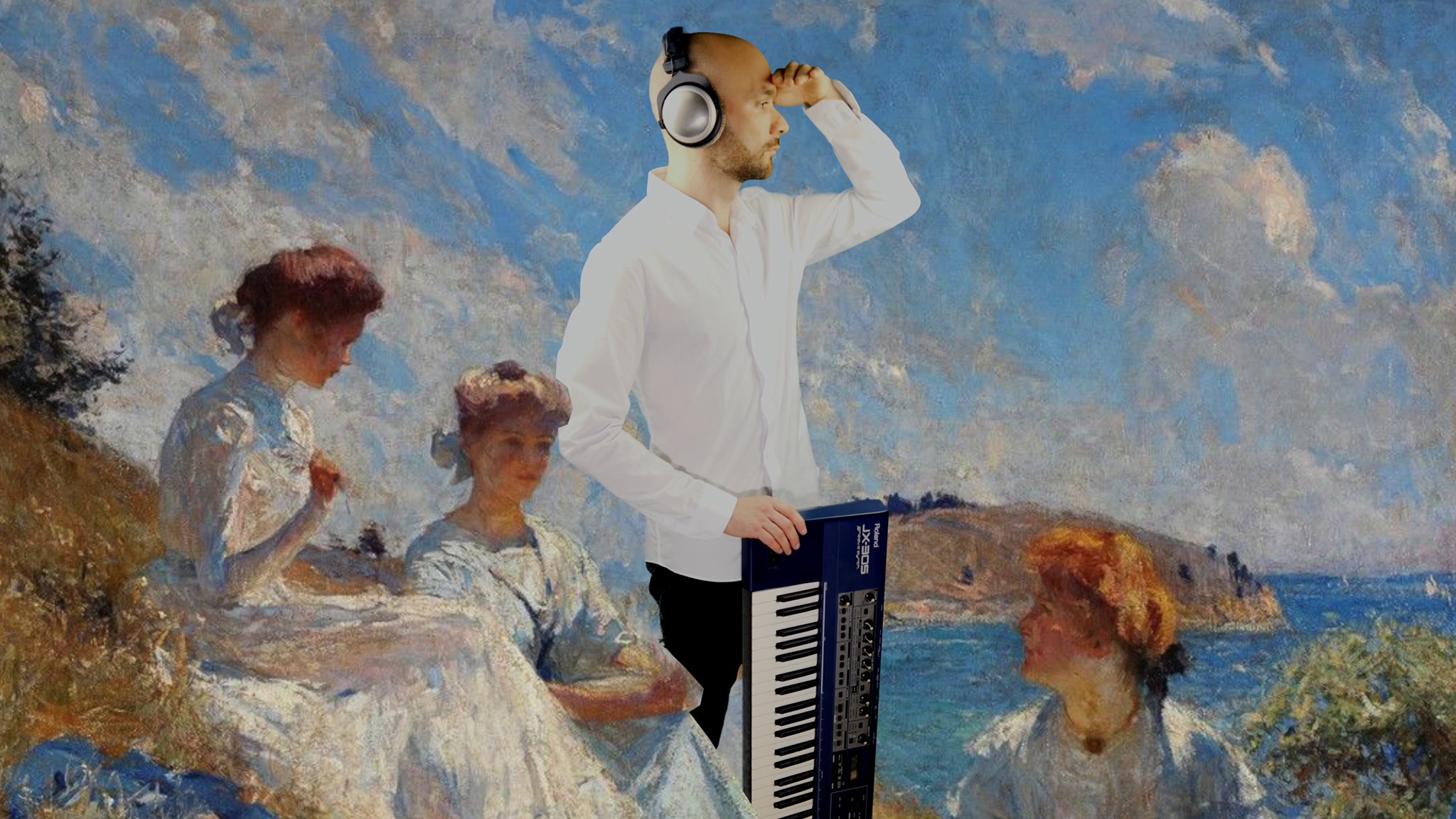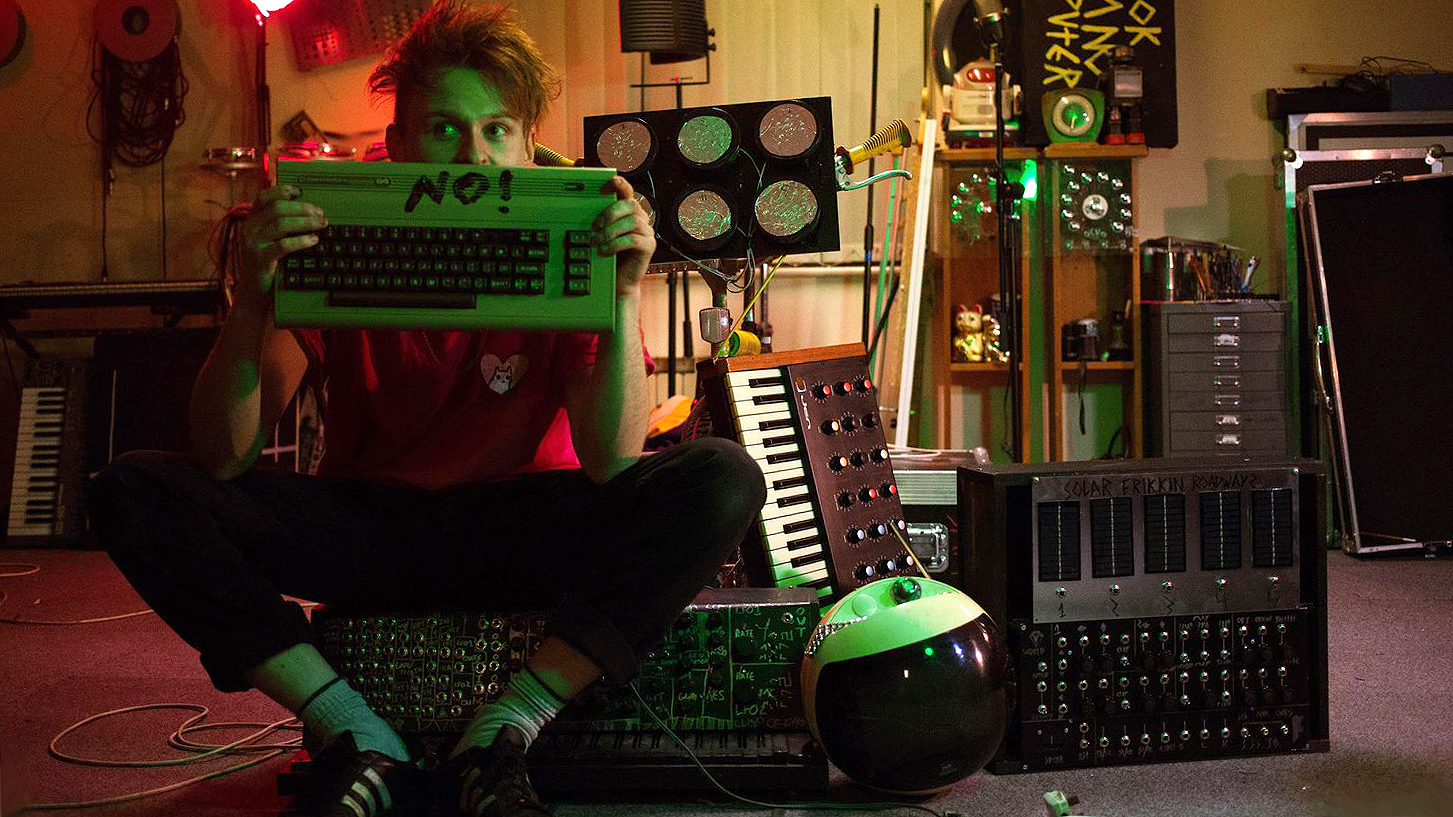The bad, the good and the ugly: How AudioPilz's meme-fuelled Bad Gear became YouTube's funniest music tech series
Florian Pilz joins us to talk about his rise to YouTube stardom and pick out five of his baddest bits of "bad gear"

“I’m deeply fascinated by innovations such as AI - even if it might make my job as a content creator and music-maker economically unfeasible in the future,” laughs Florian Pilz, host of the online hit series, Bad Gear.
Florian is sharing his love for the latest music tech, a passion he’s fed into his Bad Gear show on his AudioPilz YouTube channel since its launch during the pandemic. En route, he’s amassed 100k followers and counting, all looking for his meme-fuelled, energetic dissections of music software and hardware.
With show selections ranging from the everyday to more esoteric areas of the gear world, his focus is on cutting through marketing speak to reveal the limitations of products as well as the opportunities they create.
As his videos pivot around bad gear, you’d think many manufacturers would fear their products ending up in his lines of sight. But each brand either seems too big to notice or take it in the good humour that it’s intended.
“It was enlightening when I was at Superbooth where I did some coverage this year,” Florian says. “I took some of my favourite memes about manufacturers, printed them and framed them, then handed them over to the companies, almost like redemption gifts. Some were aware of what I was doing, others didn’t have a clue who I was. It made for some very Borat-style moments on the conference floor.”
Bad Gear
Florian is discussing his channel, content and future of music technology surrounded by what he describes as “a pandemonium” of synths, records, books and pieces of music-making hardware.
It’s here, amongst these piles of equipment, that his Bad Gear YouTube show is dreamed up, created and broadcast. His series is dedicated to reviewing the world's ‘most hated’ audio tools, although in recent months, the focus has expanded to include a critical angle on famous or otherwise noteworthy pieces. Florian’s background in audio engineering, recording bands and traditional production work has held him in good stead for these endeavours.
Get the MusicRadar Newsletter
Want all the hottest music and gear news, reviews, deals, features and more, direct to your inbox? Sign up here.

“I used to spend my time sitting behind mixing consoles and with DAWs, then I worked at a theatre here in Austria as an audio engineer and sound designer for ten years,” he explains. “All the theatrical aspects of Bad Gear stem from that.”
He ended up quitting music production and technology, returning to university, then taking on what he describes as a proper job in an office. Bored, he ended up leaving without a plan, then Covid arrived and he launched the channel.
“I wanted to be freelance, and somehow focus on audio in the broadest sense of the word,” he says of the origins of his channel. “I started AudioPilz as a marketing tool around my persona and then Covid hit and there was nothing else to do. I put up to 100 hours a week into it for months on end and that’s how I built it up.”
Breaking through
The first Bad Gear video explored the Alesis 3630 compressor from the nineties, a piece of gear made famous by dance music titans Daft Punk and synonymous with the rubbery French house sound.
“At the time, I wasn’t sure of the direction of the channel, if it was going to be pro audio or not,” says Florian. “I went long on this first episode so I could develop a prototype for the show - a lot of the idiosyncrasies and concepts of what make up a Bad Gear episode came from there.”
It was the Korg Microkorg that offered his channel an early viral moment. As his video narration says, critiquing a piece of gear “I thought everyone loves and features on so many hit records” sent his subscriber numbers spiralling.
“It’s such an iconic instrument and has had a huge impact on electronic music and the ways in which it is perceived by the wider public,” says Florian. “Yet there is also a lot of truth in calling it ‘bad gear’ - the keybed sucks, it’s limited when it comes to the controls, there are these cheesy presets on there.”
With the supposed sacred cow of the Korg line-up taking the humour and criticism, the video helped finesse Florian’s concept and shape how his content would look and feel. The format has helped Florian keep up with what is a demanding schedule. As with other content creators, he deems consistency to have been important in growing his audience.
“Every Friday there is a Bad Gear episode or something comparable in terms of how much work it requires,” Florian says. “I have to acquire the gear, make three musical jams, two of which I create in real time as far as the instrument allows, then one fully produced track with a music video that is usually based on found footage on the internet. Plus all the memes and visualisation.
“The thing that helps me the most is how it always follows the same structure - this framework helps steer it so I can complete it to the deadline.”
Innovation
As a fan of audio production technology and innovation, Florian’s musical life is immersed in hardware and software. He views the tech world new gear comes from as cyclical, particularly the analogue revival, something he has covered via Bad Gear.
“There is some magic about old analogue gear - I understand the fascination and allure compared with what is released now”
“There is some magic about old analogue gear, I understand the fascination and allure compared with what is released now,” he explains. “I did an episode where I reconstructed the nineties software ReBirth with the original instruments, this was the first time I got my hands on the original Roland TR-909, Roland TR-808 and Roland TB-303 - and working with the original 303, there was some special magic about that.”
Still, although gear improves, he’s not convinced that the sector has shown any huge innovation in recent years due to its tendency to revisit and renew what has come before. Instead, Florian is more drawn to the unknown possibilities presented by AI.
“I’m a big fan of modern art and all the content generated by AI, it’s childlike naivety really affects me,” he says. “It happens in a way to music as well, these reimaginings of deceased artists like Johnny Cash or Hank Williams, they are singing again due to AI and this is so fascinating. Although it puts the future for creators in doubt.”
Tips for creators
Florian’s background in theatre and love for cinema have given him an interesting perspective on how he views his music gear. Whenever he acquires something, whether it be brand new or already-released, he treats it “like an actor”.
“Some actors are good at certain things, others are not so good at other things,” he explains. “For example, have you ever seen Hamlet played by Mel Gibson? You shouldn’t let Mel Gibson play Hamlet! He is great at being Mel Gibson, but not Hamlet. In this way, gear is made for a specific job - if you let it do what it does best, then it will lead to results.”
Florian also has a “unfathomably huge collection” of music production tools. For him, limitations are a must otherwise he’d be lost. He believes that just because you have a piece of gear, it doesn’t mean you have to use it.
“Some producers don’t have all of their equipment hooked up all the time,” he says. “They might have an idea, then go and find the right piece of gear to realise this idea and I think this approach works best in our current music tech landscape. It’s good to have your staples which you know in and out and know that it works well with a lot of different gear - you just add stuff to taste, like when you’re cooking.”
Florian Pilz's 5 baddest bits of Bad Gear
1. Beat Kangz Beat Thang
“One of the most important things for me when it comes to a piece of bad gear is the story - and perhaps the most memorable piece I’ve featured with this in mind was the Beat Kangz Beat Thang.
“This was a hip-hop groove box from the early 2010s and I’ve always felt that the story behind it is worthy of a Netflix show. The creators attracted huge amounts of investor money to design this groove box for hip-hop artists. They even paid RZA from the Wu Tang Clan to promote it. It had this huge sense of theatre but ultimately, never really succeeded.
“I love stories like this. Even if a synth comes out, and it sounds great, I’m more interested in its impact on popular culture. Or how it doesn’t quite work out as intended. This was a video I had the most fun researching, exploring the rabbit holes surrounding it, the people involved - Kiss, Alice Cooper and Pink Floyd producer Bob Ezrin teaming up with young black hip-hop artists - and in the end it was sold cheaply at Best Buy - the listing exists until this day. The story is epic.”
2. Roland TB-3
“This was an early video about the clone of the legendary TB-303 that looked like this bad Matrix rip off. The funny thing about the TB-3 is that I didn’t want to like it, I really wanted to hate it because it is everything I don’t like about gear - it’s got a touch pad, very limited controls and presets - but it turned out to be one of my favourite mono synthesisers.
“It was a total story of redemption. As soon as I started working with it, I discovered it could do this and this, it integrated so well with my workflow. It was so good I bought a second one. It became a meme. I introduced it saying how I didn’t want to like it - now it’s in every other episode. I really love it.“
3. Arturia DrumBrute
“I love Arturia - but this DrumBrute is a drum machine that sounds like crap. It feels great, solid, the sequencer is great, the workflow is fantastic, then you hit play and it doesn’t work very well - unless you want to make really dirty techno or Berlin School stuff.
“In the episode, I posed a challenge and asked my viewers if it existed outside of YouTube videos or had ever been used in a piece of music that had been released. Literally no one had anything. So I feel it’s just a gimmick. We could have missed something but 250,000+ people saw the episode and no one could come up with any ideas on any artists or bands who have utilised it in an actual recording.”
4. Teenage Engineering Choir
“This was a recent episode that I didn’t so much enjoy working on. The choir consists of these wooden dolls, they connect via Bluetooth, they either sing songs from the public domain, or you can control them via Bluetooth MIDI. However, this doesn’t work very well, it was a challenge to get some music out of these dolls, you had latencies of over 100 milli-seconds, the Bluetooth connection was unstable so they were really hard to control.
“This was one of the first Bad Gear episodes where I didn’t include a second jam as I just wasn’t able to do it.”
5. Ensoniq Fizmo
“Alongside the bad gear, there are plenty of pieces of gear that I’ve loved using too. For example, I had the Ensoniq Fizmo on the show - it’s one of the rarest pieces of modern gear you can think of - with the rack version, there are like 500 pieces made. With the keyboard version, it is worth around 6k now and I was lucky enough to find a guy in Vienna who had two.
“I have a friend of mine who is a super hardcore gear head, I was buying and borrowing a lot of gear from him. He’s also a DJ, he had a set just around the corner from where I live. I went and when the hour got late, I asked the people sitting at the table, does anyone know anyone who owns this Ensoniq Fizmo? Bizarrely, one of these guys said yes we have one in the studio.
“He agreed to let me borrow it, drove it to my place and handed it over. I couldn’t believe he trusted me with something so rare. It was super hot that summer when I was using it and knew these things have issues with their power supplies. It meant I was super stressed out that it was going to explode.”


Jim Ottewill is an author and freelance music journalist with more than a decade of experience writing for the likes of Mixmag, FACT, Resident Advisor, Hyponik, Music Tech and MusicRadar. Alongside journalism, Jim's dalliances in dance music include partying everywhere from cutlery factories in South Yorkshire to warehouses in Portland Oregon. As a distinctly small-time DJ, he's played records to people in a variety of places stretching from Sheffield to Berlin, broadcast on Soho Radio and promoted early gigs from the likes of the Arctic Monkeys and more.
“I’m looking forward to breaking it in on stage”: Mustard will be headlining at Coachella tonight with a very exclusive Native Instruments Maschine MK3, and there’s custom yellow Kontrol S49 MIDI keyboard, too
MusicRadar deals of the week: Enjoy a mind-blowing $600 off a full-fat Gibson Les Paul, £500 off Kirk Hammett's Epiphone Greeny, and so much more










